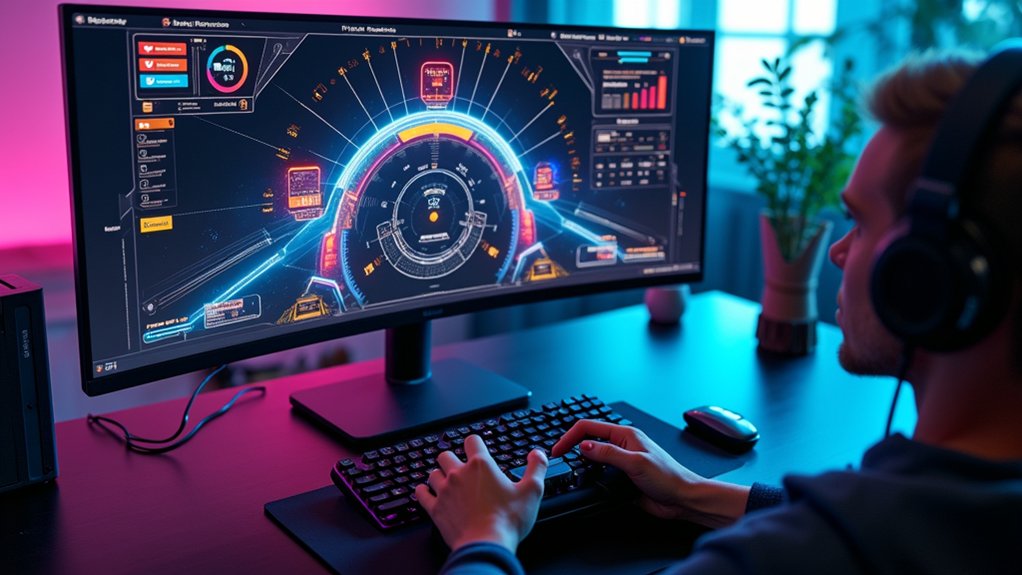
How to solve Lucas’s party room puzzle in Resident Evil 7
Overcome Lucas's Party Room puzzle in Resident Evil 7 quickly by mastering the hidden clues and timing—discover the secret to beating it fast!


A clear HUD and sensible control mapping shape a newcomer’s first hours in games. The HUD reports health, stamina, resources, and direction, while on-screen prompts hint at actions and timing. Quick-access wheels and inventory shortcuts reduce friction in tense moments. Default layouts work, but small tweaks to keybinds, sensitivity, and aim assist can prevent costly mistakes. Accessibility options further cut strain. Understanding these pieces is simple; using HUD & control mapping together is where most players gain an edge. For the best start in games, review your HUD & control mapping early and revisit settings as your skills grow.

A well-designed HUD is the player’s dashboard, delivering essential info without blocking the action. A clear HUD uses readable fonts, intuitive icons, and consistent placement to reduce cognitive load and speed up decisions.
In many games, a HUD includes mini maps to show orientation and objectives, while compass markers guide direction and distance. An objective tracker keeps current tasks front and center, and context prompts highlight interactable elements when players need them.
Notification toasts surface events without breaking immersion, and subtle audiovisual cues reinforce meaning to maintain situational awareness. When a HUD is clear, consistent, and player-friendly, the game feels more responsive, the gameplay flows better, and the overall HUD experience keeps players focused on winning.
In modern games, health, stamina, and resource bars give players instant feedback on their status in combat and exploration. A health bar is usually red and shows how close you are to losing a life; when it’s empty, your character fails or dies.
A stamina bar drains when you sprint, dodge, or use heavy attacks, then refills when you slow down or rest. Resource bars cover ammo, mana, or class energy, so you know when to reload, cast spells, or trigger abilities.
This health, stamina, and resource bars help you pace fights, plan your moves, and avoid burnout. By watching health, stamina, and resource bars, gamers can react faster, manage cooldowns, and keep the action flowing.
Few HUD elements guide navigation as efficiently as the mini-map and compass in games. The mini-map and compass give players a clear view of nearby terrain, player position, heading, and discovered landmarks, helping with quick decisions during exploration or combat.
With zoom controls, you can balance detail versus scope, while the mini-map and compass also support overlays, objective icons, and waypoints. Players can align movement by matching compass headings with mini-map paths for efficient traversal, making the mini-map and compass essential tools for smoother navigation in any game.
Action prompts and contextual indicators in games turn surface-level cues into clear on-screen guidance.
These action prompts use button glyphs, key icons, or concise verbs placed near interactable objects, doors, or dialogue options. Smart contextual indicators, like color shifts and subtle animations, signal availability, cooldowns, or restrictions.
Action prompts also adapt to stance, proximity, or mission state, reducing guesswork and improving flow. With clear placement, consistent iconography, and brief timing windows, contextual indicators reinforce muscle memory, minimize screen clutter, and preserve situational awareness, enhancing overall game UX.
In modern games, smart inventory and quick-access wheels make item management fast and intuitive. The full inventory lets players view all items, check categories, track capacity, and read clear item details. It supports sorting, splitting stacks, and inspecting status effects, which is essential for games that emphasize strategy and survival. These features keep gameplay smooth and reduce downtime during intense moments.
The quick-access wheel offers a curated set of items for rapid use without pausing. It’s perfect for healing, tools, grenades, and other throwables in fast-paced games. Players can configure the wheel directly from the inventory, prioritizing essentials for combat or exploration. Clear icons, rarity colors, and visible stack counts help with quick recognition and confident decisions in the heat of battle.
For gamers who care about efficiency, the combination of inventory and quick-access wheels turns complex item systems into a simple, responsive experience.
In many games, this setup boosts pacing, improves accessibility, and keeps players focused on action instead of menus—making inventory and quick-access wheels a must-have design choice.
Looking for a smooth Default Control Layout Overview that keeps gameplay fast and responsive? This Default Control Layout Overview covers movement, combat, and interaction so players can jump in without friction.
The left stick controls movement, while the right stick or mouse handles the camera. Face buttons are mapped to jump, interact, and dodge for instant reactions. Triggers manage combat: aim with the left trigger and fire with the right.
Bumpers let you swap weapons or abilities on the fly. The D-pad is set for consumables, pings, or context actions. Press Start to open maps and menus.
With this Default Control Layout Overview, players get intuitive controls that feel great across genres, making it easier to focus on the action.
Customizing keybinds and controller mappings can turn good controls into great ones, especially in games. With smart customization, you can group frequent actions under your strongest fingers, minimize hand travel, and reduce accidental presses.
When customizing keybinds and controller mappings, prioritize essential inputs, set consistent modifier schemes, and mirror functions across devices where possible to keep gameplay smooth.
Test changes in short sessions, save multiple profiles, and label each layout clearly. This helps you adapt faster, make fewer mistakes, and build muscle memory more effectively.
Whether you’re playing shooters, MMOs, or racing games, customizing keybinds and controller mappings gives you better control, comfort, and performance.
Optimizing your sensitivity, aim assist, and dead zone settings can dramatically improve your gameplay. Start with a low sensitivity, then gradually increase it until you can track targets smoothly without overshooting.
Aim assist should strike a balance between stickiness and freedom—lighter aim assist rewards precise control, while heavier aim assist boosts consistency when under pressure.
Keep dead zones as small as possible to reduce input lag, but large enough to prevent stick drift or unintended movement.
Always test changes in a controlled aim drill, then fine-tune your sensitivity, aim assist, and dead zone settings in live matches to lock in what feels best.
Accessible gaming options help more players read, navigate, and react without strain.
In your game, enable colorblind filters, subtitles with adjustable size, and high-contrast HUD themes to improve visibility. Offer remappable controls, toggle options for sprint and aim, and hold-time adjustments to reduce fatigue.
Fine-tune cursor sensitivity, add menu narration, and support text-to-speech for smoother navigation. Use scalable UI, adjust reticle thickness, and provide hit-marker audio for clearer feedback.
Test these accessibility options in practice modes, then fine-tune per device. With the right accessibility options, your game becomes more inclusive and enjoyable for everyone.
Mastering HUD and control mapping helps new players build clarity, confidence, and speed from the first match. Learn how health bars, mini-map, and on-screen prompts boost situational awareness, while quick-access wheels cut reaction time. With HUD and control mapping, you can understand default layouts, then customize keybinds or controller setups for comfort and efficiency. Fine-tune sensitivity, aim assist, and dead zones to sharpen precision. Don’t forget accessibility options for readable UI and responsive inputs. Nail these HUD and control mapping basics to flatten the learning curve, reduce friction, and enjoy smoother, more immersive gameplay right away.

Overcome Lucas's Party Room puzzle in Resident Evil 7 quickly by mastering the hidden clues and timing—discover the secret to beating it fast!

In Resident Evil 7, identifying crucial clues and mastering key usage unlocks the morgue's secrets—discover how to advance beyond this chilling challenge.

Knowing how to upgrade weapons in Resident Evil 4 can change your gameplay drastically—discover the secrets behind the Merchant's offers and unlock true power.

Perfect your Silent Hill 2 Remake journey by uncovering every alternative ending—each choice shapes the story in surprising ways you won't want to miss.

Just jump into God of War 2018 with these insider tips to get the Magic Crystal fast and discover secrets that speed up your quest.

Conquer the Fire Boss in Dark Souls with precise steps and strategies—discover how to survive its deadly arena and claim victory today.